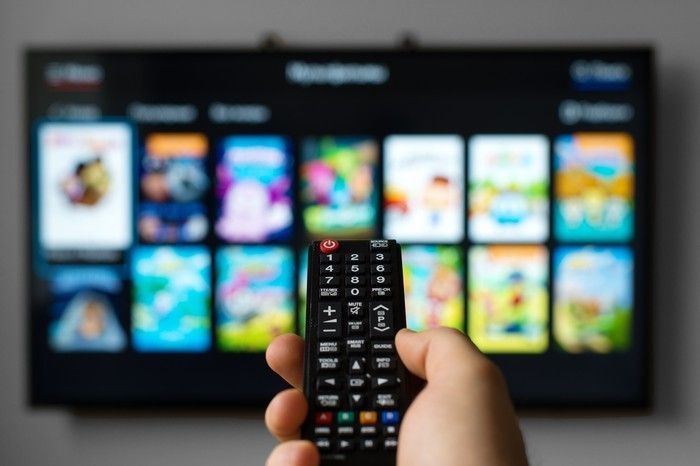
Are we still going to be going to the theater in ten years?
I try to go to the movies every week. For me, it’s like church. It’s a place where I can find myself and center myself. Whether I love what I see or not, it matters to me, and I’m pretty worried about what theaters will do over the next ten years.
Theatrical distribution and exhibition is changing faster than ever before. And movies are changing with it.
The way we consume movies is transforming, and the COVID-19 pandemic has accelerated this shift. Studios have had to rethink how they distribute movies to audiences and whether or not some titles are worth bringing to the big screen.
That scares me.
We’re seeing more movies released on streaming services, and theaters are facing an uncertain future.
So what does the future of theatrical distribution look like?
Let’s dive in.
What’s The Future of Cinema and Theatrical Distribution?
Look, I’m not some genius prognosticator. Most of these ideas are based on articles I’ve read or just conversations with people inside the industry. The future of cinema is likely to be shaped by several factors.
The first one I think matters most is the increased use of streaming services.
The rise of streaming services like Netflix, Amazon Prime Video, and Disney+ has already had a significant impact on the film industry, and this trend is likely to continue. As more people opt to watch movies from the comfort of their own homes, the traditional movie theater experience may become less popular.
We saw AMC talk about raising prices on different seats, and people immediately responded with the desire to just watch new releases at home.
As an avid VUDU user, I see that more and more titles are coming out to rent at home almost as soon as they hit theaters.
This is changing why people go to the theater. Do they want to see a small family drama there? Or just big titles?
Theaters in the Web 3.0 Era
Another huge factor for the future of theatrical is technology.
Advancements in technology like virtual reality, augmented reality, and 3D will likely change the way movies are made and experienced. Filmmakers may experiment with new ways of storytelling and immersion, which could lead to more interactive and immersive movie experiences.
We have 3D movies like Avatar, which changed the way we experience theaters. Immersive tech, like Occulus, seems like things that may expand how we feel at home, but they could be employed by theaters to make the movie-going experience more fun.
There’s even a push to make screens larger, which is something you definitely could not achieve at home.
Hollywood has slowly started to take notice that diversity and inclusion will bring more people out of their homes to support different titles.
As audiences demand greater diversity and representation in film, we may see more movies made by and for underrepresented groups. This could lead to a greater variety of stories being told and a more inclusive film industry overall. And it could lead to a big box office for those movies.

The Biggest Hurdles for the Future of Theatrical Distribution for Movies?
Of course, to sustain theatrical distribution and exhibition, there will be many hurdles along the way. Hollywood is competing with streaming services for our time. You need time to go to the movies. It’s not as convenient as watching anything at home.
There’s also the problem of piracy, which was much bigger during the DVD sales boom of the early 2000s, but still has a place now when it comes to leaking newer releases.
But, I think the largest hurdle is the rising cost of what it takes to make a movie.
The cost of producing and marketing movies is increasing, making it more difficult for smaller films to secure theatrical distribution. Additionally, the cost of movie tickets is rising, which could discourage some people from going to the theater.
These rising costs keep both audiences away and relegate theatrical movies to ones that have a big enough budget to showcase themselves.
This is also resulting in shorter theatrical windows.
With some studios releasing movies on streaming services and in theaters simultaneously, the traditional theatrical window for movies is shrinking. This could impact the revenue that theaters can generate from ticket sales.
Again, that impacts what movies are made and what studios deem to put in theaters.
Finally, as much as I hate to admit it, I am getting older. While my generation goes to the theater, we’re seeing younger generations preferring to watch things at home or even on their phones.
This changing consumer behavior has thrown a wrench into planning for the theatrical future.
Audience behavior is evolving, and people are consuming media in different ways than they have in the past. For example, younger generations are more likely to stream content and less likely to go to the theater. This shift in behavior could impact the future of theatrical distribution for movies.
Overall, the theatrical distribution of movies faces several challenges, but there are also opportunities for innovation and adaptation in response to changing consumer behavior and technological advancements.

What Will the Movies Look Like in the Future?
Okay, it’s time to make some big swings at what we could see movies becoming. I don’t think this is an overnight move, but I bet in the next ten years we’re going to see much more of this stuff.
It’s going to be shaped by a combination of technology, changing audience behavior, and industry trends.
Firstly, I would be on more hybrid releases.
When COVID hit, studios released movies both in theaters and on streaming services simultaneously. While some were up in arms over it, I think we saw a lot of the future in this strategy. This trend may continue, with studios offering viewers the choice to watch movies in theaters or at home.
We’re also going to need theaters to act more like the revered institutions they are and find ways to make themselves special.
We should have premium amenities, high-quality food and beverage offerings, as well as interactive and immersive technology like virtual reality and augmented reality. Anything to make going to the movies stay special and different than home.
Diversity and representation to ensure all audiences are served. We will continue to need more movies being made by and for underrepresented groups, which could broaden the appeal of cinema.
As well as options for every age group too.

Summing It All Up
Overall, the future of cinema and theatrical distribution is likely to be shaped by a combination of these and other factors. The industry will need to be innovative and adaptable to meet the changing needs and preferences of audiences.
If we want to keep our houses of worship, we’re going to have to bend a bit and change how they’re set up and run.
I’m hoping to go to the theater every week until I die, and I’m hoping that experience is around long after I’m gone.
Let me know your thoughts and predictions in the comments.














